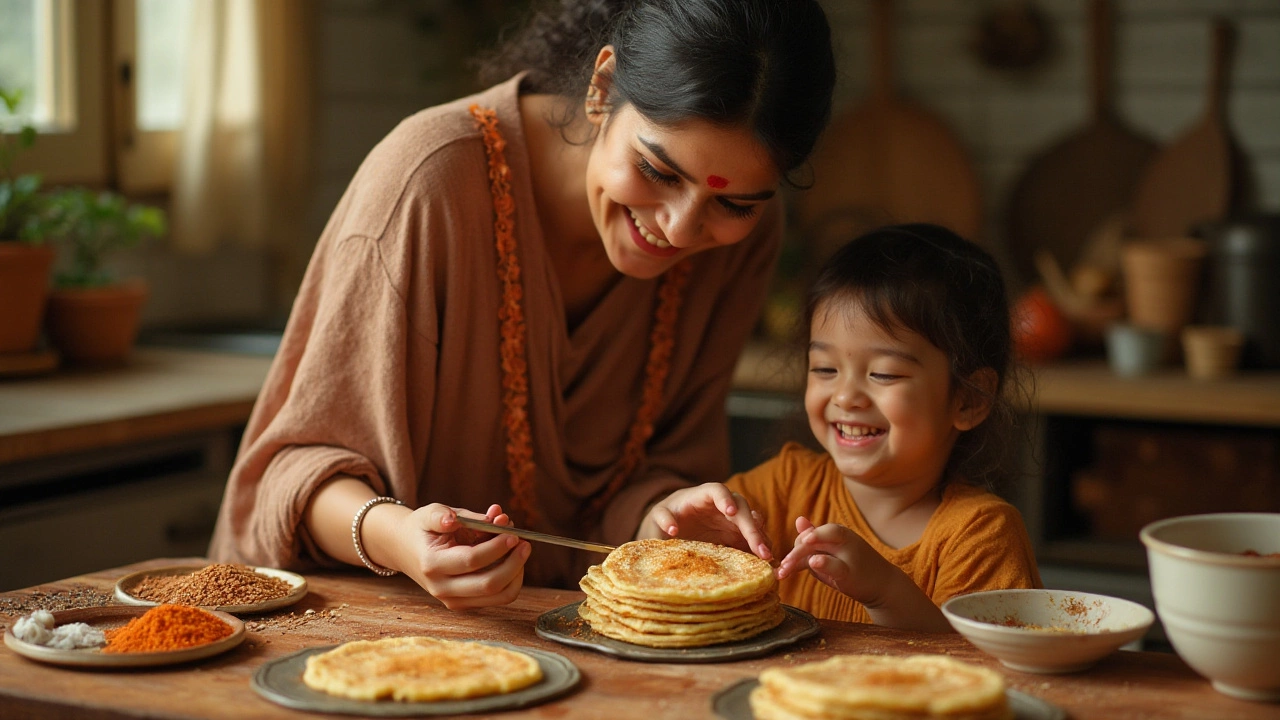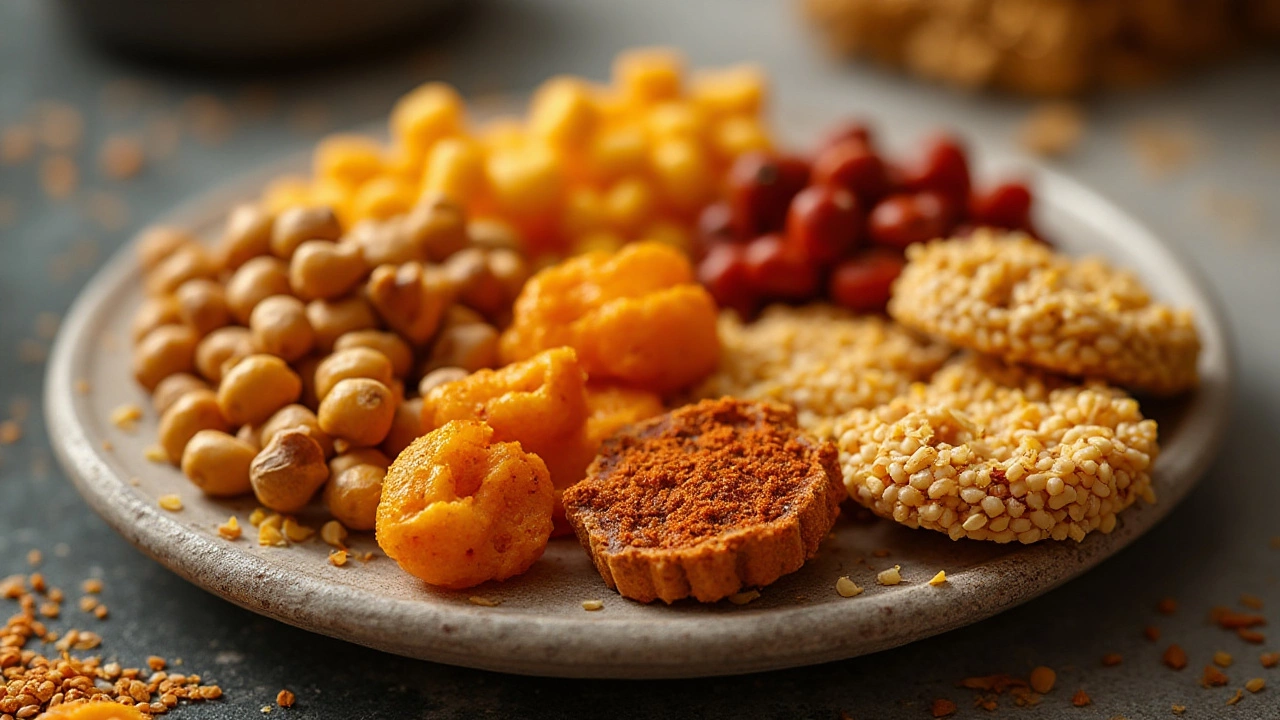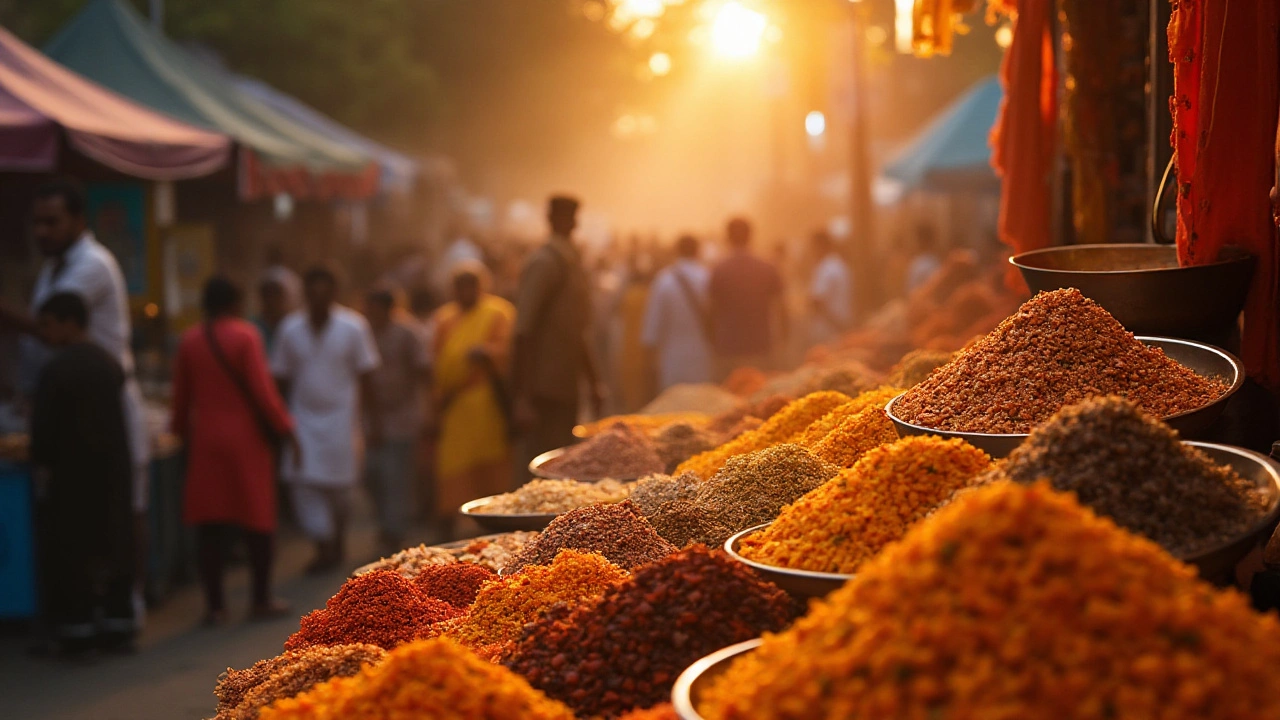Junk food cravings often strike when least expected, tempting us with their salty, sweet, and thoroughly indulgent offerings. Yet, succumbing to these cravings can come with a heavy toll on our health. For those looking to make healthier choices without sacrificing taste, Indian snacks present a remarkable solution. Not only are they packed with flavors, but many traditional Indian snacks are known for their healthy, nutritious benefits.
Understanding why we crave certain foods can be the first step in managing these urges. Whether it's stress, nutritional deficiencies, or sheer habit, knowing the root cause can help in making conscious, healthier snack choices. Let's delve into a delightful array of Indian snacks that promise the satisfaction of your taste buds along with benefits for your body. From bhel puri to roasted makhana, these snacks have stood the test of time and are gaining a modern twist that caters to health-conscious individuals.
Understanding Cravings
Cravings are a common phenomenon, experienced by almost everyone, and often driven by a complex interplay of factors. At the core, these urges can be linked to physiological signals or psychological triggers. The human body has a natural inclination towards high-calorie foods, a trait passed down from our ancestors who needed energy-dense foods to survive food scarcity. In modern times, however, this evolutionary trait can lead to a preference for junk food that offers a quick, albeit unhealthy, sense of satisfaction. Cravings are often triggered by emotions such as stress, boredom, or even excitement, and at times can be habitual, as we associate certain snacks with specific activities.
Scientific studies have also pointed to the role of neurotransmitters, like dopamine, in influencing our cravings. Dopamine is released when we eat something that's perceived as pleasurable, reinforcing the desire to seek that food again. Moreover, certain deficiencies in nutrients may prompt the body to signal hunger for specific types of food. For instance, a craving for chocolate might hint at a magnesium deficiency. Society's powerful marketing tactics around fast food and junk food amplify these cravings by creating an emotional connection between consumers and their products. These cues can manifest as colorful advertisements or attractive packaging, urging us to satisfy immediate desires rather than make healthier choices.
The Psychology of Cravings
Psychologically, cravings can be distinguished from hunger, which is the body's signal for nourishment. Instead, a craving is an intense desire for a specific taste or texture. Understanding this difference is crucial. Cravings can be influential, often leading us to make unhealthy food choices if left unchecked. Some researchers suggest engaging in mindful eating practices to combat such urges, focusing on the flavors, textures, and experiences of food. "Mindfulness can alter how we perceive taste and reduce our susceptibility to cravings," states Professor Ben Fletcher from the University of Sussex.
"Changing the way we eat can change the way we think about food, leading to healthier decisions," asserts Michael Pollan, well-renowned for his writings on food and nutrition.
There is growing evidence that regulating eating patterns, such as maintaining a balanced diet, can reduce the frequency and intensity of cravings. When the body is well-supplied with energy and nutrients, the signals leading to cravings weaken, promoting more stable eating habits. Consistently consuming fiber-rich foods, proteins, and healthy fats can regulate blood sugar levels, thereby reducing the likelihood of intense cravings. Adding elements like bitter or sour foods to diets can often help in curbing sweet cravings which are a common challenge for many.
Cravings in Different Cultures
Interestingly, cultural influences can also affect the types and patterns of cravings. In India, where spices and diverse flavors dominate the culinary landscape, cravings could steer more towards savory and spicy snacks rather than sweet or overly processed options. This offers individuals the opportunity to pivot towards healthy snacks that pack both flavor and nutrition. In various parts of India, rather than reaching for a sugary snack, people might indulge in spiced nuts or roasted chickpeas, both of which provide substantial nutritional benefits. The personalization of cravings is deeply tied to geographical and cultural backgrounds, and harnessing this understanding can pave the path to healthier snacking alternatives. By identifying personal triggers and patterns, it's possible to strategize against cravings with a toolbox full of wholesome options.

Nutritious Indian Snacks
When the craving for junk food hits, turning to healthier Indian snacks can not only satiate this urge but also add significant nutritional benefits to your diet. Traditional Indian cuisine is rich with snacks that are both wholesome and delightfully flavored. From providing essential nutrients to keeping those pesky hunger pangs at bay, there are numerous options to explore. For instance, roasted makhana, also known as fox nuts, offer an excellent low-calorie, low-fat alternative to satisfy crispy cravings. Packed with protein and calcium, makhana is not just a great snack but a fantastic addition for those looking to add a little more nutrition to their daily routine.
Another snack that often finds its way into the healthy spotlight is chana, or chickpeas. Roasted chana, dusted with a touch of salt and spices, presents a fiber-rich treat that's both filling and nutritious. Traditionally part of the Indian diet, this snack is especially appealing for those needing that crunchy sensation without the guilt of typical junk food. Additionally, chickpeas are known to aid in digestion and are a brilliant source of vitamins, making them an excellent option to have by your side.
Let's not forget the versatile and ever-popular bhel puri. This savory snack, often found in the bustling streets of India, is a tangy mix of puffed rice, assorted vegetables, and chutneys. While it's easy to clutter it with less healthy ingredients, smart choices like substituting fried sev with roasted nuts or using homemade chutneys can transform it into a more nutritious indulgence. It's a delightful snack that captures capricious tastebuds with a unique combination of textures and flavors, all while remaining light and refreshing.
Create a nutritious trail mix by incorporating a mix of nuts, seeds, and dried fruits. The combination not only gives you a balanced snack rich in proteins and healthy fats but also satisfies cravings for something sweet. Almonds, cashews, and pistachios are fantastic choices, complemented by seeds like flax and sunflower. Add some naturally sweetened dried fruits like raisins or apricots, and you'll have a snack that's as empowering as it is delicious. An interesting fact to note is that eating nuts regularly is linked to a decreased risk of various chronic diseases such as cardiovascular disease and diabetes.
According to a study by the International Food Policy Research Institute, enhancing the availability and use of nutritious snacks could significantly impact diets globally.
"Healthy snacking is a potent tool for improving diets at the individual level," says research leader Dr. Neha Ganekar. "Incorporating culturally relevant, nutritious snacks is key to achieving better health outcomes diversely."When we're mindful about the snacks we choose, even during our weakest cravings, we embrace a lifestyle that doesn't just satisfy our taste buds but also nurtures our well-being.

Recipes to Try
The world of Indian cuisine offers a vibrant selection of snacks that are both delicious and nourishing, perfect for quelling those junk food cravings without derailing your diet. For anyone looking to venture into this flavor-rich journey, having a few easy yet satisfying recipes on hand is a great starting point. One of the beloved choices is the roasted makhana, which is both light and provides that much-needed crunch. Makhana, often known as fox nuts, are lotus seeds that can be roasted with a pinch of salt and pepper or even some chaat masala for an exciting burst of taste. Not only are these a snack you can munch on guilt-free, but they are also known to be low in calories and packed with protein, making them a popular choice among health enthusiasts.
Another delectable option is chana chaat, which involves using chickpeas as the base. Chickpeas are not only versatile but are also a rich source of fiber and protein. To prepare chana chaat, simply boil some chickpeas and toss them with chopped onions, tomatoes, coriander, and a squeeze of lime. Adding a dash of cumin powder and salt elevates the flavors significantly. The result is a tangy, refreshing snack that can please anyone's palate while keeping health concerns at bay. It's no wonder why chana chaat is a favorite among those seeking healthy snacks without compromising on taste.
An enticing recipe that combines both tradition and modern taste is puffed rice bhel. This simple delight uses puffed rice as the canvas on which a symphony of tastes is painted. By mixing puffed rice with chopped vegetables, tangy tamarind chutney, and a sprinkle of sev, bhel puri becomes an irresistible snack for any occasion. It provides that sought-after crunch while being incredibly light.
"Bhel puri is much more than just a snack," suggests Chef Vikas Khanna, "It's a celebration of flavors that encapsulates the essence of Indian street food in a healthy bowl."
If you're looking for something with a modern twist, consider trying out coconut and date energy balls. These wholesome treats are easy to prepare and make for an excellent energy booster. Start by blending pitted dates and desiccated coconut until the mixture has a sticky texture. Adding a hint of cardamom can bring a delightful aromatic quality to these treats. Form small balls, and you have a snack that's naturally sweet, nutritious, and incredibly satisfying.
Exploring these recipes not only introduces an array of flavors into your diet but also shows that satisfying junk food cravings with healthy snacks is entirely possible. So, why wait? Embark on this culinary journey and indulge in the rich tapestry of Indian snacks that promise both nourishment and delight. Whether it's a quiet afternoon or an evening with friends, these snacks can be your go-to options, bringing a piece of India to your plate while keeping your health and taste buds equally satisfied.

Mindful Eating Habits
In a world where multitasking has become the norm, mindful eating is a refreshing approach to savoring our meals and respecting our body's hunger cues. It encourages us to slow down and truly appreciate each bite of our chosen healthy snacks, including those delightful Indian options we're exploring. Instead of eating in front of a screen or while rushing out the door, it’s about creating a focused environment that allows us to notice textures, flavors, and aromas — sensory experiences often overshadowed by life's hustle.
To practice mindful eating, start by setting the scene where you eat. Remove distractions, whether it’s turning off the television or setting aside your mobile phone. Chew slowly, giving your brain and stomach time to communicate, which typically happens about 20 minutes after you start eating. This is crucial in helping prevent overeating. A simple tip: place your utensils down between bites, allowing the focus to remain on the food’s taste and how your body responds to it. This continuity encourages a deeper connection with your food, making nutritional choices like Indian snacks even more enjoyable.
Engaging in mindful eating isn't solely about the act of consuming food; it also involves reflecting on the whole eating process, from the preparation to the aftertaste. Consider where your food comes from and what it takes to bring it to your plate. This gratitude can enhance satisfaction and help you make conscious choices about what and when you eat. According to Dr. Jan Chozen Bays in her book "Mindful Eating: A Guide to Rediscovering a Healthy and Joyful Relationship with Food," she notes that it's about being "fully present without judgment" in our eating experiences, offering balance and a rewarding sense of well-being.
Another engaging component of mindful eating is acknowledging and addressing emotional eating, which is often intertwined with our cravings for junk food. Recognizing when you're eating for reasons other than hunger can help you redirect those urges into healthier habits. This includes identifying triggers like stress or boredom and substituting them with alternative activities like walking, reading, or reaching for a nutritious Indian snack instead. Keeping a food diary can also aid in maintaining these mindful habits by noting what you eat, your mood, and hunger levels before and after meals.
The benefits of adopting these habits can be profound, ranging from improved digestion to a more harmonious relationship with food, possibly leading to better weight management and a reduction in disordered eating patterns. In fact, a table published by the Centers for Disease Control (CDC) highlights a study where participants who practiced mindful eating showed a significant decline in body mass index (BMI) over a six-month period compared to those who didn't.
In integrating mindful eating into your lifestyle, remember that it's a skill cultivated over time, requiring patience and practice. By focusing on healthy choices like Indian snacks and being attentive to the experience, you can enjoy food more fully, fostering a positive connection with your meals that nurtures both body and soul.
